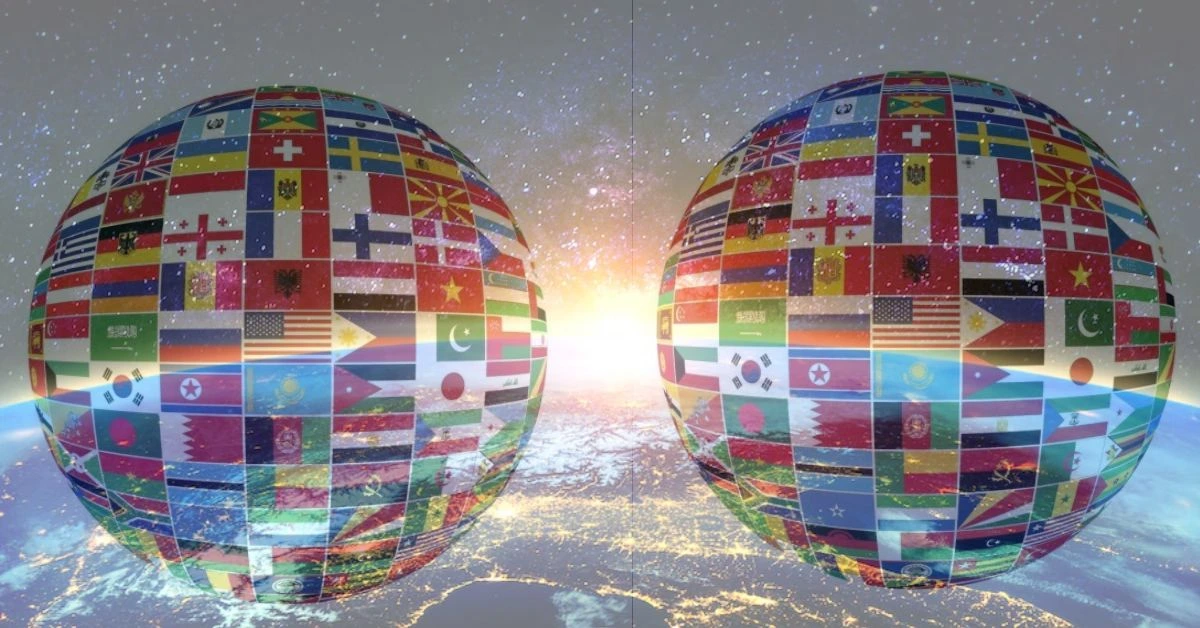The Power of Kääntäh: Bridging Global Communication
In our increasingly interconnected world, communication across languages and cultures is more important than ever. As businesses expand globally and individuals engage with diverse cultures, the need for effective translation and communication tools becomes critical. One of the key elements in facilitating cross-cultural dialogue is Kääntäh, a term that refers to the practice of translation. In this comprehensive guide, we will explore the different facets of Kääntäh, its importance for businesses, its role in language acquisition, and the ways it enhances communication in both professional and personal contexts.
Understanding Kääntäh: The Essence of Translation
At its core, Kääntäh represents the translation process—the bridge that connects people from different linguistic backgrounds. Translation is not just about converting words from one language to another, but about conveying meaning, intent, and emotion accurately. Whether it’s a business looking to expand into international markets, a student learning a new language, or a tourist trying to understand local customs, Kääntäh plays a crucial role in breaking down language barriers.
Effective Kääntäh goes beyond simple word-for-word translations. It involves understanding the cultural context, idiomatic expressions, and nuances of both the source and target languages. This is why professional translators who are native speakers of the target language are so highly valued. They bring cultural knowledge and an in-depth understanding of the language, which is essential for accurate and effective translation.
The Role of Kääntäh in Business Expansion
In today’s globalized economy, businesses are no longer confined to their local markets. Companies are reaching out to international audiences, which means that effective communication across cultures is vital. This is where Kääntäh becomes an invaluable tool for business success. Let’s explore how translation services help businesses expand into new markets, build relationships with foreign partners, and deliver localized customer support.
Communicating Effectively to International Audiences
One of the primary ways Kääntäh aids businesses is by enabling them to communicate effectively with international audiences. When a company expands into a new market, it must present its products, services, and brand in a way that resonates with the local population. This requires more than just translating the text on a website or product packaging. It involves tailoring the message to suit local cultural preferences, values, and customs.
Translation services ensure that businesses can deliver clear and accurate messaging to international customers, whether it’s through website content, advertisements, social media posts, or product descriptions. Professional translation services help ensure that the tone, style, and meaning of the original message are preserved, making it more relatable to the target audience.
Establishing Trust and Building Relationships with Foreign Partners
Kääntäh is also essential in fostering trust and building strong relationships with international partners. Whether it’s negotiating contracts, discussing business strategies, or understanding legal documents, accurate translation is critical. Miscommunication due to poor translation can lead to misunderstandings, delays, and even lost business opportunities.
By using professional translation services, businesses can ensure that all documents—whether legal, technical, or financial—are translated with precision. This level of accuracy not only prevents costly mistakes but also shows respect for the business culture of the partner country. Building trust through accurate and clear communication lays the foundation for successful and long-term business partnerships.
Localizing Customer Care and Support
Localization is the process of adapting content to meet the linguistic, cultural, and functional expectations of a specific target market. In the context of customer service, localization ensures that businesses can provide effective support to international customers in their native language. This helps companies maintain a positive reputation and build customer loyalty.
Kääntäh plays a crucial role in localizing customer service materials, such as manuals, help guides, FAQs, and support documentation. Moreover, it allows businesses to offer multilingual customer support through various channels, such as chat, email, or phone. By providing timely and accurate assistance in a customer’s preferred language, companies can build stronger connections with their global clientele.
How Artificial Intelligence is Revolutionizing Kääntäh
The advent of artificial intelligence (AI) has significantly impacted the field of Kääntäh, especially with the rise of machine translation (MT) tools. AI-powered translation technologies, such as neural machine translation (NMT), have revolutionized the translation industry by making the process faster, more efficient, and more accurate.
AI-Powered Translation Tools: A Game Changer
Neural machine translation (NMT) has advanced rapidly in recent years, thanks to AI. Unlike traditional rule-based machine translation systems, NMT uses deep learning algorithms to analyze large datasets of text in multiple languages. This allows NMT systems to learn the relationships between words and phrases in context, improving translation quality over time.
NMT tools can handle vast amounts of content quickly, which is especially useful for businesses that need to translate large volumes of text, such as e-commerce platforms, websites, or social media posts. While human translators are still necessary for more complex or nuanced texts, AI-powered translation tools provide a solid foundation for high-quality, quick translations.
Machine Translation and Quality Refinement
Despite the progress made in AI-powered translation, machine translation is not yet perfect. There are still challenges in translating idiomatic expressions, cultural references, and complex terminology. This is where human translators come in. While AI tools can quickly generate translations, human expertise is needed to refine these translations and ensure they capture the correct meaning, tone, and context.
The combination of AI and human expertise is a powerful tool for businesses. AI handles the heavy lifting of translating large volumes of text, while human translators provide the necessary adjustments to ensure accuracy and cultural appropriateness. This synergy enhances the overall translation process, making it faster, more accurate, and cost-effective.
The Importance of Cloud-Based Translation Management Systems
In addition to AI-powered translation tools, cloud-based translation management systems (TMS) have transformed how businesses manage translation projects. These platforms enable seamless collaboration between translators, project managers, and other stakeholders, ensuring that all translation work is organized and completed on time.
Streamlining the Translation Process
Cloud-based translation management systems offer real-time project tracking, central resource management, and collaboration features. These tools allow translation teams to work together more efficiently, reducing the time and cost associated with the translation process. Additionally, cloud-based systems make it easier for businesses to maintain consistency across translations, ensuring that all content adheres to brand guidelines and industry standards.
Improving Efficiency and Reducing Costs
By using cloud-based platforms, businesses can significantly reduce the time and cost of translation. These systems allow for the reuse of previous translations through Translation Memory (TM) tools, which store translations from past projects. This means that translators can quickly access and use these stored translations, reducing the need to translate repetitive content. Over time, this helps businesses save money and ensure consistency in their multilingual content.
Adaptive Machine Translation: Learning from User Input
Adaptive machine translation (AMT) systems are another breakthrough in the world of Kääntäh. These systems learn from user feedback and corrections, gradually improving the quality of translations over time. AMT platforms become more accurate by analyzing the corrections made by human translators and users.
Improving Accuracy Over Time
As users provide corrections or suggestions to AMT systems, the platform learns from this input and refines its translations. This adaptive learning process ensures that the system becomes more accurate and better suited to the specific needs of a business or industry. For example, AMT systems can improve their understanding of technical jargon, regional dialects, and industry-specific terminology.
This ability to adapt and improve over time makes AMT systems a valuable tool for businesses looking to streamline their translation processes while maintaining high-quality results.
Best Practices for Successful Kääntäh
While Kääntäh can be a powerful tool for communication, it is important to follow best practices to ensure high-quality translations. Here are some essential tips for successful translation:
Hire Professional Translators
For translations that truly resonate with your target audience, it’s essential to invest in highly trained professional translators. Native speakers of the target language bring valuable cultural and linguistic knowledge to the table, ensuring that translations are not only accurate but also culturally appropriate.
Prioritize Cultural Context
Effective translation goes beyond the words themselves. To ensure that your message is understood and appreciated by your target audience, it’s important to prioritize cultural context. This means adapting your content to local customs, idioms, and preferences. By doing so, you can make your message more relatable and impactful.
Use Translation Memory Tools
Translation Memory (TM) tools are invaluable for maintaining consistency across translations. These tools store previously translated segments of text, allowing translators to reuse them in future projects. This ensures that your content remains consistent across languages and reduces the risk of errors or inconsistencies.
Establish Quality Assurance Processes
To ensure the highest quality translations, it’s important to have quality assurance (QA) processes in place. This includes proofreading, editing, and managing terminology. By carefully reviewing translations before they are finalized, businesses can avoid costly mistakes and ensure clarity and accuracy.
Collaborate with Stakeholders
Successful translation requires clear communication between translators, subject matter experts, and stakeholders. By working together closely, you can ensure that translations align with your brand voice, business goals, and overall strategy.
Kääntäh in Language Learning
Beyond its role in business, Kääntäh is a powerful tool for language learners. By engaging with translated texts, language learners can expand their vocabulary, improve their grammar, and gain a deeper understanding of idiomatic expressions and cultural context.
Expanding Vocabulary and Grammatical Structures
One of the key benefits of translation for language learners is the opportunity to expand their vocabulary. By comparing original texts with their translations, learners can identify new words, phrases, and sentence structures. This helps them improve their language proficiency and gain a deeper understanding of grammar.
Understanding Idioms and Colloquialisms
Idiomatic expressions and colloquialisms can be challenging for language learners, as their meanings often cannot be inferred from the literal translation. By studying translated texts, learners can gain insight into these expressions and better understand how they are used in context.
Enhancing Reading Comprehension
Reading translated texts is a great way for learners to practice reading comprehension. By comparing the original text with the translation, learners can better understand sentence structure, vocabulary, and overall meaning. This helps them develop their reading skills and gain more confidence in the language.
Conclusion
In an increasingly globalized world, Kääntäh is more essential than ever. Whether you’re a business looking to expand into new markets, a language learner trying to master a new language, or an individual engaging with different cultures, translation plays a vital role in fostering understanding and communication across languages and borders. By embracing professional translation services, leveraging AI-powered tools, and following best practices, we can continue to break down language barriers and build stronger connections in an interconnected world.







